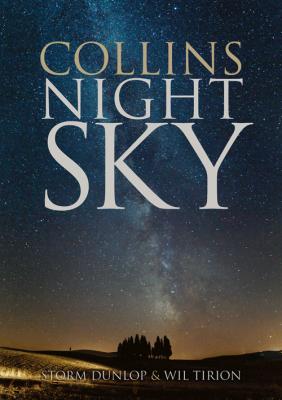ТОП просматриваемых книг сайта:
Collins Night Sky. Wil Tirion
Читать онлайн.Название Collins Night Sky
Год выпуска 0
isbn 9780007436170
Автор произведения Wil Tirion
Жанр Природа и животные
Издательство HarperCollins
COLLINS
NIGHT
SKY
STORM DUNLOP & WIL TIRION
CONTENTS
Cover
HOW TO USE THIS BOOK
OBSERVING THE NIGHT SKY
The names of stars and other objects
THE CELESTIAL SPHERE
MONTHLY CHARTS
THE MOON
THE PLANETS
OBJECTS IN THE SKY
Nacreous and noctilucent clouds
Meteors and the zodiacal light
CONSTELLATIONS
ADDITIONAL TABLES
FURTHER INFORMATION
GLOSSARY
INDEX
Copyright
This book is intended for those taking an interest in the sky, wanting to find their way around among the many constellations, and also carry out simple observing with the naked eye, binoculars or small telescopes.
The first section begins with some general advice on OBSERVING THE NIGHT SKY. This is followed EXPLORING THE SKY by information that will help readers to locate objects in the sky, and also to understand the charts, diagrams, and tables of positions that are provided both in this book and elsewhere. This portion includes descriptions on the names of stars and other celestial objects, together with the reasons for their differences in brightness and colour. The section ends with some information about simple photography.
The next section will help beginners to find their way around the sky. This is not as complicated as it might at first appear. Everyone starts by learning to recognize the five main circumpolar constellations, which are visible whenever the sky is clear (THE CELESTIAL SPHERE). The next few pages describe the location and recognition of the constellations that are most clearly visible at different seasons, together with the most notable objects in that part of the sky. Although arranged to start with the winter, readers may choose any season to begin observing. The same applies to the following section (MONTHLY CHARTS), which shows the appearance of the night sky with two charts for each month of the year, looking north and looking south.
Specific information about individual objects follows, beginning with the Moon (THE MOON), and then the planets, including detailed charts showing planetary positions for a period of five years. These are followed by charts showing the periods when some of the brighter minor planets (asteroids) are visible in small instruments.
The next section (OBJECTS IN THE SKY) describes individual phenomena or objects in more detail, ranging from unusual high-altitude clouds that are visible in twilight or in the middle of the night, to distant galaxies.
The final section (CONSTELLATIONS) may be used at any time, but comes into its own when readers are moderately familiar with finding their way around the sky. There are charts and photographs of all the constellations visible to mid-latitude northern-hemisphere observers, together with a description of objects of interest. The positions of meteor radiants are shown, and charts and comparison stars are given for a number of interesting variable stars. Details of sources of further information, and a glossary.

